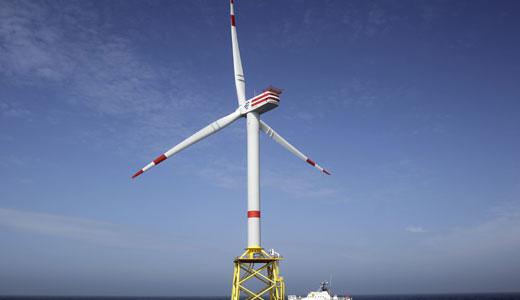
Germany is moving ever forward in its transition to a clean energy-based, nuclear-free country. If the shift is successful, Germany could stand as a paradigm for industrialized countries looking to do the same. However, swapping fossil fuels for renewable energy will be a difficult process, according to a GlobalData.com press release.
The Fukushima disaster in Japan caused many people to rethink the potential risks involved with atomic energy dependence. But Germany did more than reconsider its relationship with nuclear power; in 2011, former Federal Minister for Environment, Nature Conservation, and Nuclear Safety Norbert Röttgen announced that the country plans to entirely abandon nuclear energy by 2022.
That initiative is part of a larger-scale plan, popularly referred to as Energiewende (“energy turn” or “energy revolution”). Essentially, it’s the most ambitious push for clean energy ever attempted by an industrialized country, sources say.
The goals of the plan include cutting greenhouse gas emissions by 40 percent from levels during the ’90s by the year 2020 – and 80 percent by midcentury. It also involves a huge, forthcoming push for wind, solar, biowaste, and hydroelectric power – materials that produced a combined 20 percent of the country’s electricity in 2011 (a six-percent increase from ten years prior).
Going forward, however, that plan will mean investing billions, operating more natural gas power plants, and completely overhauling the country’s electrical grid. The lattermost requirement could be achieved by using more advanced, smart grid technologies.
The flow of renewable energy generation can be altered by anything from meteorological to environmental circumstance. And during hours of high usage, congestion in power transmission lines will make voltage fluctuations more common, threatening the electricity supply with instability. Smart grid technologies would prevent that by using systems that detect voltage disturbances and provide immediate, reactive power compensation.
There are other hurdles to overcome as well: construction of a planned 25,000-megawatt underwater wind farm has been halted due to concerns that the turbines’ sound was injuring and disabling porpoise populations in the North and Baltic seas. Thus, millions of dollars must now be put into developing special noise-reduction technology before construction can resume.
Beyond that, even a wind farm conscious of animal safety is still a huge gamble, both in terms of reliability and price, experts believe. “Nobody really knows what the Energiewende will cost,” said Karen Pittel, an energy economist at the University of Munich. “But especially those wind farms – they are more or less pilot projects.”
Miranda Schreurs, director of the Environmental Policy Research Center at the Berlin Free University, suggested that, despite the hefty cost (and animal welfare concerns), Germany’s move toward renewable energies will be a beneficial experiment, because those energies combined have created an export industry that’s worth $12 billion, and is “poised for more growth.”
Those energies have already come a long way toward capturing the favor of people, despite Chancellor Angela Merkel’s longtime support for nuclear power. Now, Germany’s seven oldest reactors have been taken offline, but that looked much less likely back in 2010 when Merkel pushed through measures to extend the lifespan of all 17 of the country’s reactors – with the last one not scheduled to go offline until 2036.
Then Fukushima happened, and Merkel reversed her position following the protests of tens of thousands of people, who believed that nuclear energy was not what was best for Germany’s future.
In one of the largest of those protests – where 3,000 demonstrators formed a human chain around a nuclear power station in northern Germany, organizers released a statement, saying, “The half-hearted and much too slow nuclear exit in Germany must clearly be accelerated.”
If that acceleration goes as planned, Germany may prove that going green in the near future is, after all, both feasible and possible.
Photo: An offshore German windmill in the North Sea. Though it and its peers still require the implementation of noise reduction technology before their construction can re-commence, offshore wind farms are just one way in which Germany plans to wean itself off fossil fuels before 2022. Frank Augstein/AP












Comments